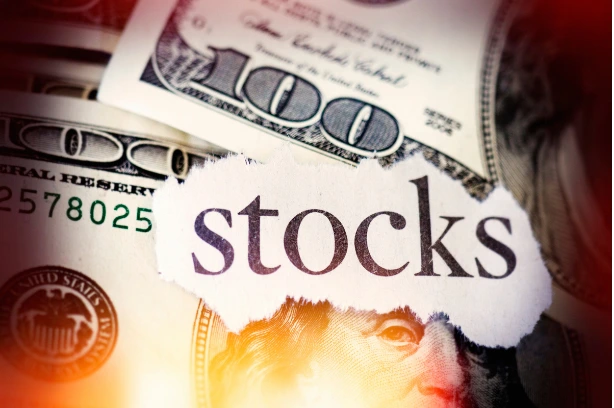By Preserve Gold Research
The United States may have stepped onto new ground in digital finance with the passage of the GENIUS Act. Marketed as a spark for innovation, the Guiding and Establishing National Innovation for U.S. Stablecoins Act stands as the first federal framework for digital currency. It cleared Congress with unusual bipartisan momentum before President Donald Trump signed it into law this July. Lawmakers have trumpeted the bill as proof of American leadership, yet unease hums beneath the celebration. Could this be the opening move toward a government‑issued digital dollar that might thin the walls around personal privacy and give Washington sweeping control over every transaction?
On the same day the House approved the GENIUS Act, it also narrowly passed a companion bill aimed at preventing the creation of a central bank digital currency (CBDC). “A fundamental choice is at stake about the future of money in America—a choice between privacy and government control,” warned Rep. French Hill of Arkansas, highlighting the intent to safeguard Americans’ privacy by prohibiting any U.S. CBDC.
The juxtaposition is striking. On the one hand, Congress is promoting privately issued stablecoins as the next evolution in money. On the other hand, it’s pushing back against a CBDC out of fear that a government version of digital cash could become a “surveillance state” nightmare. Across the nation, Americans are wondering whether the new law is a Trojan horse, one that could usher in a digital dollar whose every move may appear on a federal dashboard. Is that fear misplaced, or is it an early alarm? A closer look at the GENIUS Act may reveal whether today’s victory could lead to tomorrow’s loss of financial autonomy.
Celebration Amid Controversy
At its core, the GENIUS Act targets stablecoins, a class of cryptocurrencies designed to maintain a stable value by being pegged to an asset like the U.S. dollar. The Act sketches the first nationwide blueprint for issuing and using such coins. It spells out what qualifies as a payment stablecoin, then locks in “safeguards” meant to shield both households and the broader financial system. “Our years of diligent work in Congress to bring clarity to payment stablecoins has reached a historic turning point,” said Rep. French Hill, one of the architects of the bill. Until now, most issuers have operated in a gray zone, relying on a patchwork of state rules. The new law is purported to close that gap.
Despite the upbeat fanfare, the journey of the GENIUS Act through Congress was anything but smooth. A bloc of conservative lawmakers nearly derailed the measure because they fear it might leave the door ajar for a central‑bank digital currency. To these legislators, regulating private stablecoins isn’t enough—they want ironclad assurance that the Federal Reserve will never issue its own digital dollar. They fear that by embracing crypto innovation without explicitly banning a Fed-controlled digital currency, Congress might be leaving the back door open for an Orwellian future. “We feel like we need to be dealing with all this at once,” explained Rep. Chip Roy of Texas, one of the holdouts who stalled the vote. In their view, the Senate’s version of the stablecoin bill was insufficient because it would allow for the creation of a Fed-backed digital dollar in the future.
The standoff reached a peak in mid-July. A dozen members of the House Freedom Caucus (a faction of staunch conservatives) initially blocked the floor rules needed to advance the GENIUS Act, throwing what had been dubbed “Crypto Week” on Capitol Hill into chaos. In response, House Speaker Mike Johnson and even President Trump himself intervened to negotiate with the skeptics.
The resolution was a deal: House leadership promised a vote on the Anti-CBDC Surveillance State Act (a separate bill to prohibit any Fed-issued digital currency) by tacking it onto a must-pass defense authorization. With that assurance, the holdouts dropped their objections, and the stablecoin bill sailed through the House in a bipartisan 308–122 vote. (For context, over 100 Democrats joined nearly all Republicans to back it, indicating rare cross-party agreement on the need to regulate crypto). Immediately after, the House did pass Rep. Tom Emmer’s Anti-CBDC Act along party lines, underscoring that wariness about government digital money is now an official plank of the majority’s agenda.
The fact that Congress had to placate its own members with an anti-CBDC measure speaks volumes. “This is about choosing between American privacy and governmental control,” Emmer argued, framing his bill as protection against a future in which a central bank digital currency could track every transaction. Even as the U.S. embraces crypto through stablecoins, it is drawing a bright red line against the issuance of an official digital dollar.
But skeptics remain unconvinced. Representative Marjorie Taylor Greene insists the bill should explicitly bar a Federal Reserve digital currency. She warns that deeper crypto integration could let the Fed control money and monitor every transaction. In an interview with Steve Bannon, Greene dismissed leadership’s promise to add an anti-CBDC clause to the defense bill, predicting it will be stripped out in the Senate. Her opposition is both personal and political. “I’m voting no because I’m a Christian and I’ve read Revelation 13:16‑17,” she told Bannon, invoking the biblical passage about a mark that governs all buying and selling.
Privacy concerns were echoed across the aisle as well. Some Democratic lawmakers supported the stablecoin framework but warned that it lacks sufficient safeguards, both against abuse by private actors and potential overreach by the state. “By passing this bill, Congress will be telling the world that Congress is OK with corruption, OK with foreign companies buying influence,” said Rep. Maxine Waters of California, the ranking Democrat on the House Financial Services Committee.
She and others pointed to how the bill’s origins were “industry-backed” and coincided with President Trump’s own foray into the crypto business. Sharing a similar sentiment, critics like Sen. Elizabeth Warren argued that GENIUS was a weak law that “fails to adequately protect consumers“ and even leaves room for self-dealing by officials. Warren noted that while the Act nominally bars members of government from issuing stablecoins while in office, it “inadequately protects” against broader conflict-of-interest problems.
Other concerns swirl around financial stability and crime. Representative Rashida Tlaib cautioned that unleashing private companies to issue digital dollars could “create a whole new form of shadow banking“ with systemic risks that might force taxpayer bailouts if things go wrong. This alludes to the fear that a major stablecoin collapse—say, if one lost its peg or a run on redemptions drained its reserves—could have ripple effects like the subprime crisis did in 2008.
Watchdogs also flagged loopholes that could enable money laundering and sanctions evasion. Transparency International warned that the law doesn’t fully close the Tether loophole, referring to the world’s largest stablecoin (USDT, issued by a company offshore), which might circumvent U.S. rules via secondary markets. “American digital assets infrastructure risks becoming a haven for kleptocrats,” said Scott Greytak of Transparency International, if foreign-issued stablecoins can flow in without oversight. These critiques underscore that the GENIUS Act is not bulletproof. It sets the stage for a digital dollar ecosystem but also leaves issues that future policymakers will need to address. And it’s precisely in addressing those issues that some skeptics see the risk of a slippery slope toward a government-controlled digital currency.
Stablecoins vs. a Central Bank Digital Currency (CBDC)
At the heart of the debate is the difference between private stablecoins and central bank digital currencies. A CBDC is essentially a digital form of fiat money issued directly by a central bank, in the case of the United States, by the Federal Reserve. In theory, a U.S. CBDC would sit on the Fed’s balance sheet as a digital liability, spendable everywhere paper money travels, yet it would exist only as coded entries on federal servers. The Fed did publish a white paper in 2022 to “foster a broad, public dialogue about CBDCs” and explore potential benefits and risks, but it has not decided to create one…yet.
Globally, however, the trend is unmistakable. Dozens of countries are exploring or piloting CBDCs. China’s digital yuan is already in live trials; the European Central Bank is designing a digital euro; nations from India to Brazil are experimenting with digital versions of their currencies. Backers claim these projects improve payment efficiency, expand financial access, and enhance currency controls. But they all involve central banks taking a more direct role in digital payments.
In Washington, the worldwide push hasn’t gone unnoticed. Proponents of a U.S. CBDC argue that America risks falling behind in the evolution of money if it sticks to an old-fashioned paper dollar while rivals modernize. The Treasury Department and the Federal Reserve have both studied how a digital dollar might function, including how to strike a balance between privacy and the need to prevent illicit activity. But so far, U.S. officials have moved cautiously, aware of the political landmines.
It’s against this backdrop that the GENIUS Act’s passage has triggered fresh anxiety. By legitimizing digital dollars issued by private entities, is Congress indirectly laying the groundwork for an eventual Fed digital dollar? Champions of the Act counter that its very purpose is to harness private innovation and to keep the government from seizing the entire payments stack. They point to the companion Anti‑CBDC measure as a firewall. In their vision, banks and tech companies will compete to mint stablecoins, regulators will set guardrails, and the Fed will stay in its lane.
But critics aren’t convinced the line will hold. They worry that today’s stablecoins could become tomorrow’s CBDC by another name. One hypothetical path could be as follows: As stablecoins become increasingly integral to the economy, the federal government may start to influence how they operate. The GENIUS Act already invites regulators to set standards and supervise issuers. If a crisis or major scandal were to strike, such as a stablecoin failure that harmed millions of users, public pressure might demand a “safer” government alternative.
At that point, issuing a Fed-backed digital dollar could be presented as the solution to mitigate the chaos of private cryptocurrencies. “If a large portion of stablecoin reserves is held in Treasuries, [a run] could force issuers to sell those Treasuries quickly, putting downward pressure on prices and disrupting the Treasury market,” legal analysts noted. And any stablecoin meltdown might force authorities to intervene. In other words, success or failure, stablecoins could prompt the government to take action.
A more deliberate path also looms. The federal government might ride the very rails private firms are now building. Already, the GENIUS Act enables “banks and nonbanks to dive into the market” of digital currency issuance. It’s not hard to imagine a future administration saying: “We’ll create an official Digital Dollar Wallet app that supports all these regulated stablecoins for convenient public use.” Such a wallet, even if initially just a portal for private coins, could slide into an effectively government-run payment platform. An analysis in Forbes posited that if the U.S. did issue a CBDC, “the government would [likely] issue a wallet app to every American”—a system that could “inevitably evolve into a platform for surveillance [and] control” if misused.
In essence, the fear is that once the architecture for digital dollars is ubiquitous, the distinction between a coin managed by a company and one managed by the state might blur. All it could take is a law or executive decision to designate one of the regulated stablecoins as the official digital dollar or to require that all such coins be held in interoperable wallets that the Fed can access or even program. At that point, we’d effectively have a central bank digital currency, whether or not we call it by that name.
Privacy and Control—The Core Concerns
Why are so many Americans across the political spectrum alarmed by the prospect of a U.S. CBDC? The answer boils down to privacy and power. Cash, once it leaves your hand, all but vanishes from official sight. A retail CBDC, by contrast, could log every swipe, tap, or scan forever. Federal authorities might view or even harvest that ledger, turning routine purchases into searchable data. Critics point to China’s digital yuan as a warning sign, arguing that transactional breadcrumbs already feed a system that rewards or punishes citizens based on their political behavior.
“We must never emulate the Chinese Communist Party’s social credit system,” warned Dr. Mike Faulkender of the America First Policy Institute, “which they weaponize to punish citizens who disagree with the government by cutting them off from the economy.” A coalition of free‑market and privacy groups went further, calling CBDCs an “existential threat” to civil liberties. They warned that a digital dollar could let the IRS rifle through personal finances or track perfectly legal activities without a warrant.
Even more mainstream voices, such as the American Bankers Association (ABA), share skepticism. The ABA observed that “the dollar is already digital today“ through private bank accounts and payment apps, and questioned what problem a Fed CBDC would actually solve. Instead, they warned, it “would present unacceptable risks and costs,” potentially destabilizing banks and infringing on privacy. If people could hold digital dollars with the Fed, they might withdraw money from commercial banks, potentially undermining the banking system, especially during times of stress.
Others point to the constitutional questions raised. “CBDCs present major privacy concerns for everyday Americans, including granting the government the ability to track all purchases and collect intimate personal details on its citizens. The right to financial privacy is protected by the Constitution,” noted the Blockchain Association. Echoing those concerns, the conservative advocacy group Club for Growth argued that “A U.S. CBDC would threaten the financial health of the country and the constitutional rights of law-abiding Americans.” In the digital age, metadata about your purchases can reveal much about your life: medical treatments, political donations, religious tithes, books you buy, and places you travel. A CBDC system might provide authorities with a real-time window into those details.
But privacy is only half the story. If dollars become software, they could carry programmable rules. Imagine stimulus credits that expire if unspent, or payments blocked for disfavored goods. While central banks, such as the Fed, insist they would never do such things without authority, the mere capability raises red flags. “On principle, creation of a CBDC represents a massive expansion of government control over the economy,” argued Brent Gardner of Americans for Prosperity, “and it would trample on individuals’ rights.”
Government-owned digital currency could one day give the state levers to meddle in how and when people spend their own money. It’s a direct inversion of the decentralized, privacy-centric ethos that initially attracted many to cryptocurrency. Ironically, a technology initially designed to empower individuals financially could, under a different design, become a tool to empower the state at the expense of individuals.
These concerns explain why the anti-CBDC movement has gained momentum so quickly. In Congress, Rep. Emmer and allies repeatedly invoke American core values: privacy, freedom, and limited government. By dubbing his bill the “CBDC Anti-Surveillance State Act,” Emmer explicitly tied a digital dollar to the specter of a surveillance state. He and others often reference dystopian literature and real authoritarian regimes in the same breath as CBDC. “A government-issued CBDC is nothing more than an Orwellian surveillance tool,” Emmer said during a House floor debate, summing up the sentiment of many critics.
Protecting the Future of Money
The GENIUS Act may look like a tidy solution today, yet it could nudge the United States toward a world where every dollar flickers across a federal screen. History shows that powers granted in crises or through “limited” frameworks rarely shrink in scope. The creation of the Federal Reserve itself in 1913 vastly changed how money and banking were governed. More recently, the Patriot Act’s anti-terrorism provisions ultimately enabled broad financial surveillance of Americans’ bank records. Could the stablecoin regime, established with promises of “free markets and individual freedom,” as Rep. Valadao put it, later become the backbone for something antithetical to those values?
Regulators now hold the keys to the Act’s undefined corners, and a future Treasury or Fed could claim that the infrastructure built for private tokens proves America is ready for a central‑bank coin. One market shock or one stablecoin run, and officials might argue that only a government‑issued FedCoin can restore order.
Public oversight may slow that slide, yet the guardrails feel increasingly fragile. The House has passed an Anti‑CBDC bill, but its fate in the Senate remains uncertain, and any statute can be rewritten when priorities change. Agencies such as the Consumer Financial Protection Bureau were barely mentioned in the Act, despite their role in policing the privacy of digital wallets. Encryption promises and data-retention limits may sound reassuring, yet they can crumble once law enforcement or tax authorities demand unfettered access.
Americans now stand at a crossroads where money could shift from a private medium of exchange to a programmable tool of control. A cashless economy might allow the state to monitor or even limit spending in real-time—an outcome critics warn would gut the very freedoms that underpin commerce. If vigilance fades, the convenience of tap‑to‑pay dollars may turn into an invisible chain, bonding citizens to algorithms they neither designed nor can escape.
The stakes run deeper than balance sheets. Money in the United States has always mirrored the nation’s ideals of liberty, from colonial scrip to greenbacks to paper bills that still pass hand to hand without a trace. Surrendering that anonymity, even incrementally, could erase a birthright generations took for granted. Whether the GENIUS Act serves as a firewall against government overreach or a doorway to Big Brother money will depend on scrutiny from lawmakers, technologists, and an informed public. Without it, a digital dollar could evolve into the most intrusive instrument of state power the republic has ever seen.








